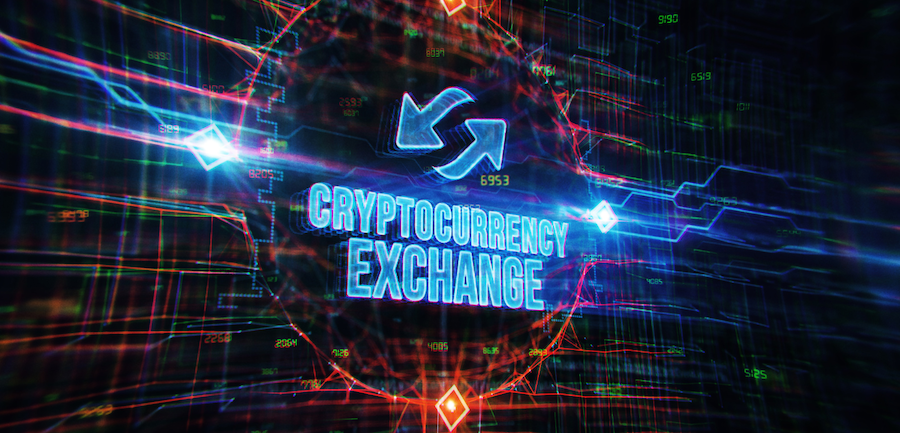There is certainly something to this suspicion, given Terra’s failure resulted in other failures. Many believe that DeFi is just in its infancy and that Terra and Celsius’ recent crises will only help it mature. Throughout the entire sector, including basic blockchain protocols, decentralized apps, and front-end user experiences, Naureen Mustafa concludes, that there is innovation every step of the way.
The collapse of terra & subsequent platforms will change DFI lending speculation, to a much better protocol of real-world outcomes.

DeFi advocates claim that his nascent industry will continue to grow and, ultimately, make good on its promises.
“By removing the need to rely on intermediaries, DeFi makes traditional banking services far more accessible.”
Leading DeFi protocols are now seeking exposure to real-world assets.
DeFi “has passed the threshold of speculation and investment.”
____
Decentralized finance (DeFi), which is not so decentralized after all, is going through a period of soul-searching right now. Ever since Terra collapsed in May and brought a number of platforms with it, there has been a prevailing sense that DeFi doesn’t offer much beyond circular lending and recklessly leveraged speculation, the kind that can cause a chain reaction of failures if one domino falls.
Given that Terra’s failure did result in other failures, there is certainly something to this suspicion. However, figures working within crypto and the DeFi sector affirm that DeFi remains a young area and that it will mature and solidify as it evolves.
Indeed, many argue that there will be increasing integration between DeFi and legacy finance in the years to come, while it will also find applications in areas outside of finance, such as the Internet of Things, digital ID, and data storage. And the more it does this, the less it will revolve around the unstable practice of lending and borrowing almost exclusively for speculation.
DeFi’s potential beyond speculation
There’s been no shortage of criticism of DeFi since May, when Terra’s de-pegging and collapse cascaded throughout the space.
In response to several platforms stepping in to help shore up the sector, software engineer-turned-crypto skeptic Stephen Diehl remarked in late June that “most of the decentralization rhetoric in crypto is at best aspirational and at worst just empty marketing.” Meanwhile, MetaMask co-founder Dan Finlay told Vice in July that “many of the collapses that happened during this last round were things that were branding themselves as DeFi but then were actually kind of operating as shadow banks with massive leverage.”
One commentator even suggested that “DeFi is dying” in response to the collapses of the summer, while two other prominent crypto skeptics, David Gerard and Amy Castor, collaborated on a “dead and dying list” for Defi in late June. Meanwhile, FTX founder Sam Bankman-Fried compared DeFi yield farming to Ponzi schemes.
Basically, the thrust of all of these criticisms is that too much of DeFi involves highly leveraged speculation: platforms would take deposits from users after promising high yields, and then use these deposits to lend to other platforms or make investments themselves. Of course, with the crypto market being so notoriously fickle and volatile, speculating with other people’s money is rarely a good idea.
However, there remain many defenders of DeFi within the crypto sector, all of whom continue to affirm that the space will continue to grow and, ultimately, make good on its promises. This includes Jason Ma, the director of business development at Web3 infrastructure network Axelar, who tells Cryptonews.com that DeFi is a natural evolution of the current financial system.
“DeFi eliminates intermediaries and central oversight, making financial markets more accessible to retail investors and creating new investment opportunities. Decentralization democratizes banking and finance by ensuring easy access to financial services for everyone, particularly in developing countries,” he said.
In terms of its potential, Ma argues that DeFi adopts numerous strengths from its use of blockchain technology, such as transparency that can improve due diligence and help people identify and avoid potential financial scams and harmful business practices. Likewise, immutability via smart contracts provides extra protection against bad actors and fraudulent transactions.
Other figures are in agreement when it comes to avowing the future potential of DeFi, even if it hasn’t yet lived up to it.
“DeFi is potentially one of the most compelling use cases for cryptocurrencies, as it enables the execution of any business logic on-chain, in a transparent and trustless manner,” said Till Wendler, the co-founder of economy-of-things blockchain technology provider peaq.
This kind of testimony isn’t hard to come by, with commentators within crypto making some bold claims on behalf of DeFi and where it will end up in the longer term. For
Pedro Isaac Lopez, Chief Growth Officer at THORWallet DEX, DeFi is a “critical component” in building a more inclusive global financial system.
“By removing the need to rely on intermediaries, DeFi makes traditional banking services far more accessible, opening up the array of innovative tools enabled by blockchain technology. These services and tools include swapping, borrowing or lending, producing yield from crypto assets via pooling, and yield farming,” he told Cryptonews.com.
Lopez points out that, even after the recent downturn and the ensuing collapses, the total value locked into the ecosystem’s DeFi platforms hovers around USD 70bn, per DefiLlama. For him, this is a sign of the robustness of DeFi, and an indication that it will ultimately be used to deploy and manage capital more efficiently and adapt to changing market conditions in a way that was previously impossible.
The present and future of DeFi
Skeptics are likely to argue that such ambition still hasn’t been realized, and possibly never will. That said, there are numerous examples of DeFi platforms achieving things in the present, rather than just signaling toward a utopian future.
“As an example, the MakerDAO community recently passed a proposal to integrate a US bank into its collateral system,” said Jason Ma, referring to the US-based Huntingdon Valley Bank, which now has a debt ceiling with MakerDAO of USD 100m after Maker’s community voted to accept it into its ecosystem.
“It will be able to borrow the sum in DAI by depositing collateral into an off-chain account. Five other real-world assets have been integrated to MakerDAO, with more suggestions in discussion on the governance board,” added Ma.
Maker also recently voted to allocate USD 500m in DAI into US treasury bills and corporate bonds, meaning that DeFi has begun playing a role in the allocation of capital to the global economy. If you accept that banks, treasury bills, and bonds are useful to the world economy, you now might have to accept that DeFi is useful.
Till Wendler also agrees that more leading DeFi protocols are now seeking exposure to real-world assets, citing cases of business-to-business lenders leveraging DeFi to invest in businesses offering real-world services, such as Fairmint.
“We’ve seen some momentum in the crypto mortgages. The industry is slowly, but surely moving toward real-world outcomes, and that’s exactly where it should be heading if it wants healthy yields and services,” he said.
According to Naureen Mustafa, Head of Exchange Development at Lisk, DeFi has begun transforming the real estate, insurance, and crowdfunding industries, as well as other sectors.
“For instance, DeFi is eliminating the need for paperwork and all intermediaries in the real estate industry. You can now buy real estate tokens or even full property only by signing a transaction through your digital wallet and can become an owner of an asset without involving banks, realtors, or government agencies, etc.,” she told Cryptonews.com.
A recent example of the merging of DeFi and real estate includes the partnership announced in June between Teller Protocol and Tower Fund Capital, which will see depositors with Teller receive interest payments for funding mortgages and loans awarded by Tower Fund Capital.
Sure, such partnerships represent initial steps, but they show that DeFi is expanding, and that it’s not destined to be little more than a leverage mechanism for crypto speculation.
“While speculative lending and borrowing applications have seen the fastest rates of adoption, the entire DeFi sector is in its infancy, and I strongly believe that it will expand to include corporate finance, real estate, content production and distribution, and more,” said Mattias Tengblad, the CEO and co-founder of blockchain-based crowdfunding platform Corite.
Many others agree that it’s still very early for DeFi, and that the recent crises suffered by the likes of Terra and Celsius will only help it mature. As Naureen Mustafa concludes, there is innovation at every level of the sector, from basic blockchain protocols to decentralized apps to front-end user experiences.
She said, “It has passed the threshold of speculation and investment. Serious use cases are currently being developed, and DeFi services are more transparent, powerful, and technologically advanced than a centralized financial system.”
Original Published HERE
_____
Learn more:
– How to Spot the Next Celsius Before It’s Too Late
– USD 6.8B Pension Fund to Invest in Crypto Lending Market
– Nomad DeFi Bridge Drained of At Least USD 150M in ‘Chaotic’ ‘Decentralized Robbery’
– DeFi Didn’t Break – Dan Morehead & Joey Krug
– 7 DeFi Risks You Should be Aware of According to CoinShares
– DeFi is ‘Designed to Avoid This Bullshit,’ Compound Founder Says About Crypto Bailouts

